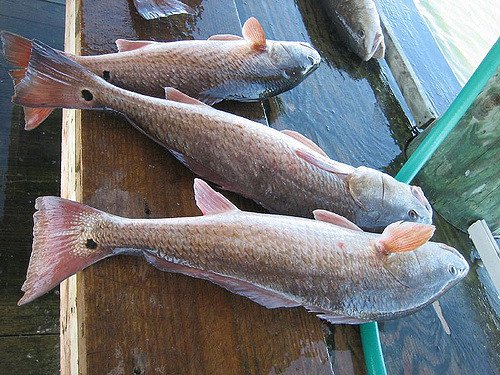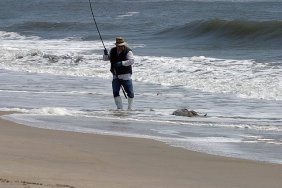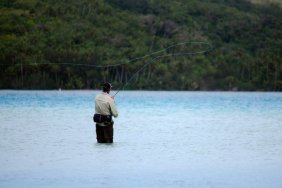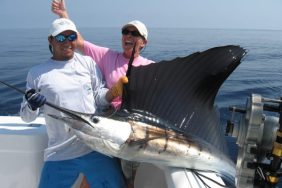Redfish are perhaps my favorite species to target. Stalking them in shallow marshes is a thrill that can’t be rivaled by much else, and when the water’s clear you can spot them from a mile away.
What about when the water is murky or stained, though? How do you spot them then? If you know the telltale signs of redfish, also known as red drum, it’s easier than you think. Here’s what to look for when you’re hunting redfish on the flats.
Wide V-Wakes
Redfish cruising in shallow flats tend to leave a distinguishable wake behind them. There will be a distinct bulge in the surface made by the fish’s broad, blunt head, followed by a long, trailing V-shaped wake. Reds often swim very straight, as well, so if the wake is moving erratically, there’s a good chance it’s something else.
Look for Those Tails
There’s no surer sign of a redfish than a gold tail with a black spot waving in the air. When reds nose around in the muddy shallows for shrimp and crabs, they’ll angle their bodies down and their tails break the surface. Not many other fish in a marsh feed this way, but if you do see another tail, just remember to look for the tell-tale black spot.
Grass Movement
Other flats species—trout or jacks, for instance—typically feed in open water and deeper channels, whereas reds will often stick close to grassy shorelines and flooded banks. They also commonly chase prey into flooded vegetation, so if you see moving grass, there’s a strong possibility it’s a redfish hunting for a meal. Aim your cast ahead of where the fish is moving and reel in to entice a strike.
What to Avoid
The tell-tale redfish signs listed above are surefire indicators of feeding reds, but there are also signs to let you know you’re not dealing with redfish. For example, if you see V-wakes on the surface that pop up quickly, move fast and then disappear, don’t get excited. You’re probably seeing mullet, which are just saltwater baitfish. Another thing to note is a sudden splash, which is more often than not a gar bolting when it’s spooked. Diving birds are typically a sign that trout and jacks are feeding on baitfish, as these species tend to corral bait to the surface, whereas reds tend to feed along the bottom.
Photo credit: Flickr CC








